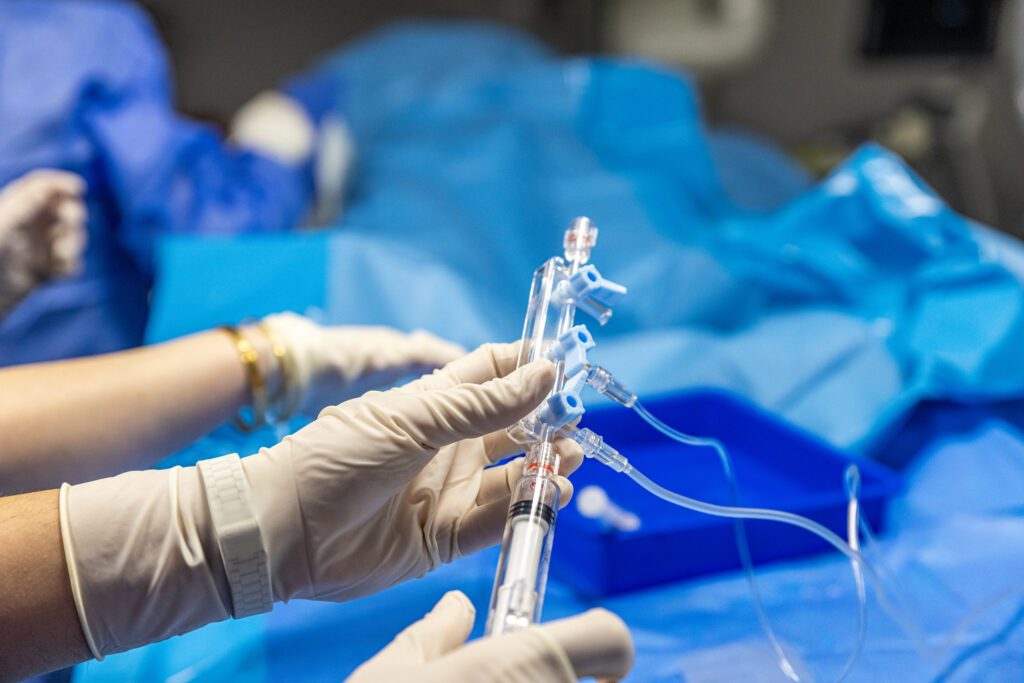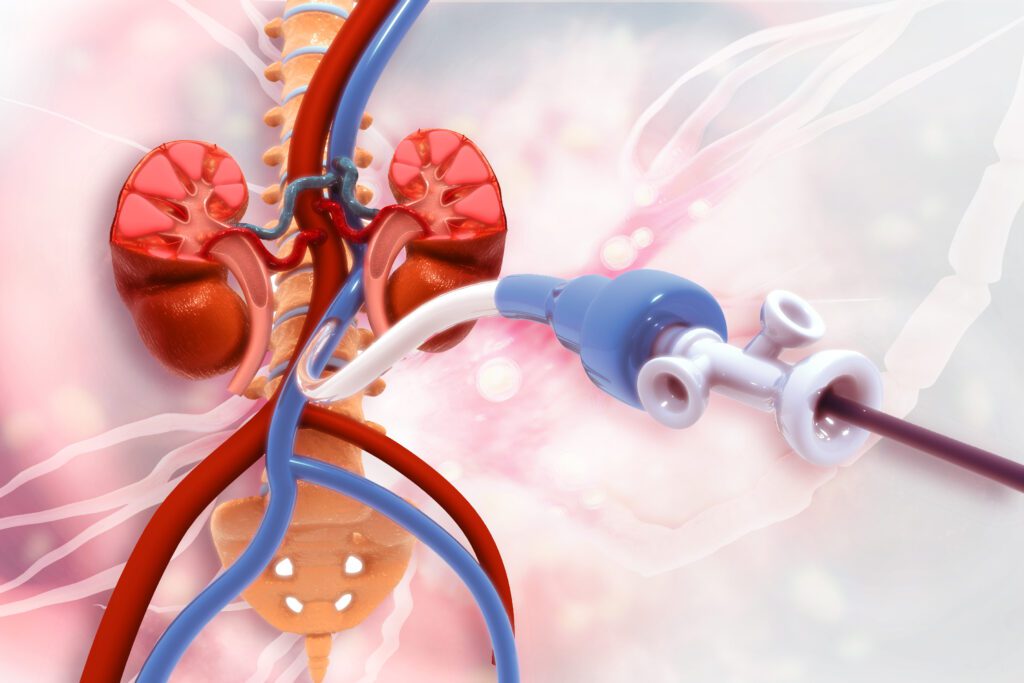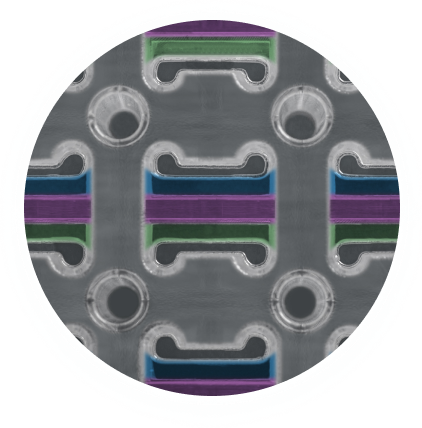What Are Dialysis Catheters?
Dialysis catheters are medical devices used to access the bloodstream for hemodialysis, a life-sustaining treatment for patients with kidney failure. These catheters are inserted into large central veins, typically the internal jugular, subclavian, or femoral vein, to enable the efficient exchange of blood between the body and the dialysis machine. They serve as a vascular access option for:
- Patients requiring urgent dialysis
- Individuals awaiting creation and maturation of a permanent access (e.g., arteriovenous fistula or graft)
- Those for whom other access sites have failed or are unsuitable
Types of Dialysis Catheters
Non-Tunneled Catheters
Short-term use (days to a few weeks)Inserted directly at the access site and held in place with sutures
Tunneled Catheters
Designed for medium- to long-term use. Placed under the skin and tunneled to exit some distance from the vein insertion point. Equipped with a Dacron cuff to reduce infection risk and help secure the catheter. More biocompatible and suitable for outpatient management

Each catheter typically consists of two lumens (dual-lumen), allowing simultaneous blood removal and return.
Why Are Dialysis Catheters Important?
Dialysis catheters are critical for maintaining treatment continuity, particularly in patients with limited access options or during emergencies. However, they are also associated with a higher rate of complications than permanent access methods.
Common risks include:
- Thrombosis: Formation of clots around or within the catheter, often leading to poor blood flow or catheter dysfunction.
- Infection: Catheter-related bloodstream infections (CRBSIs) are among the most serious risks and can lead to sepsis.
- Stenosis: Repeated catheter use can cause narrowing of the vein, complicating future access.
Design Considerations and Material Challenges
To perform effectively, dialysis catheters must meet a complex set of design requirements:

- Hemocompatibility: To minimize platelet adhesion and clot formation
- Flow Efficiency: To allow rapid blood exchange at prescribed dialysis flow rates
- Mechanical Flexibility: To maintain placement without kinking or damaging vessels
- Antimicrobial resistance: To prevent bacterial colonization and reduce the risk of CRBSIs
Materials commonly used include polyurethane and silicone, both of which can be functionalized with coatings to improve biocompatibility and performance.
Coatings: A Critical Performance Enhancer
Dialysis catheters operate in a demanding biological environment, often leading to complications such as thrombosis, infection, and immune-mediated reactions. Advanced surface coatings, such as Camouflage™ by Smart Reactors, offer a targeted solution to these longstanding challenges.
Camouflage™ is engineered to reduce the catheter’s visibility to the immune system and to modulate the early biological response following implantation. This results in:
- Reduced thrombosis risk by limiting platelet activation and fibrin deposition
- Lower inflammatory response, decreasing the likelihood of early complications and preserving vessel patency
- Promotion of rapid, controlled endothelialization, which helps to stabilize the catheter surface and protect against long-term complications such as stenosis or embolism
- Reduced risk of infection by discouraging microbial attachment and colonization
- Potentially decreased reliance on systemic therapies, such as anticoagulants
By shifting the early host response toward a more compatible, less reactive profile, coatings like Camouflage™ can significantly enhance the performance and lifespan of dialysis catheters.
Dialysis catheters are vital tools in renal replacement therapy, yet their performance is often compromised by the body’s reaction to artificial surfaces. Thrombosis, infection, and immune activation remain key barriers to long-term success.
Camouflage™ coating technology addresses these challenges by creating a more biologically favorable surface. Through reduced inflammatory response and lowered risk of thrombosis, Camouflage™ helps stabilize the catheter interface sooner and more effectively. The result: fewer complications, extended catheter function, and a potential reduction in the need for intensive systemic therapies.
At Smart Reactors, we are committed to improving the safety and performance of blood-contacting devices. Camouflage™ represents a meaningful advancement in dialysis access, a coating solution that supports better outcomes for patients and greater confidence for care providers.
Share this post: on LinkedIn

